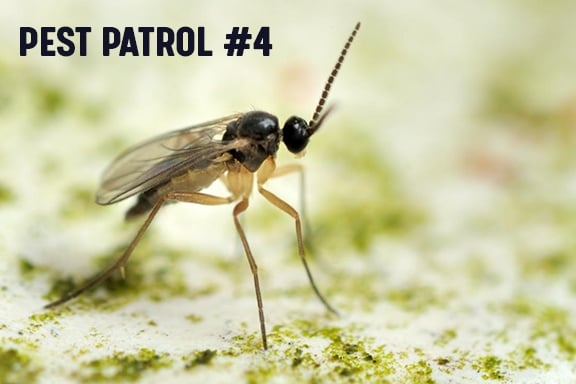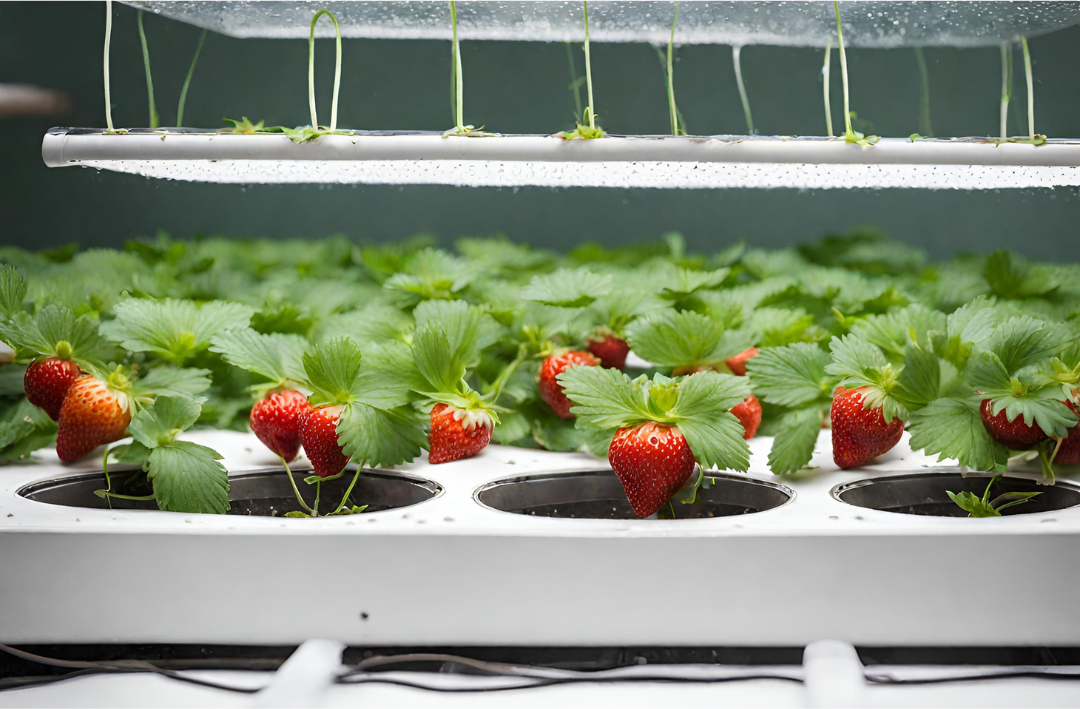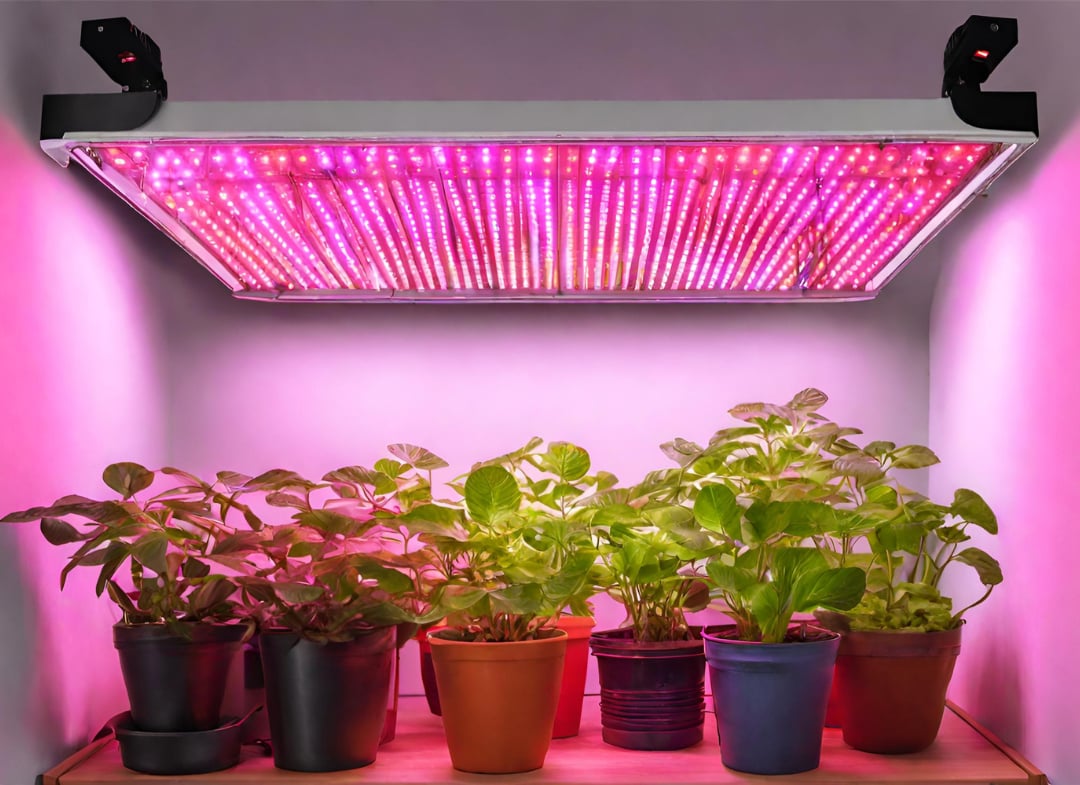
Pest Patrol - Part 4: Knowing Your Enemy - Fungus Gnats

Knowing your enemy is the first step to defeating your enemy so we’ve provided all you need to know about specific pests in our series within a series, “Knowing Your Enemy”, inside and out. Our very first creature to explore is the dreaded fungus gnat.
Enemy 1: Fungus Gnats - Not Fun Guys
If ever the soil at the top of your pots looks like the hottest new nightclub, with tiny black winged creatures “dancing” up a storm, chances are you’re looking at fungus gnats. You’ll probably notice when you’re watering is when things really get crazy, like someone just dropped the bass. Fungus gnats love moisture and their good time can mean your plant’s demise. Let’s take a closer look at what exactly these insects are, their life cycle, how and where to find them and the damage they can do to your garden.
Fungus gnats belong to two major families: Sciaridae and Mycetophilidae, Sciaridae being the most likely to be found in an indoor garden. Fungus gnats look like a cross between a fruit fly and a mosquito, with dark bodies, long legs and antennae, and in the case of Sciaridae, dark wings. Fungus gnats are very small, typically just 1/16th to 1/8th inch long.
Attracted to light, you may first see them flying around windows in your grow room; however, they don’t fly all that well so they usually remain on pots, in the soil. The full-grown adults, while annoying, will not feed on you or your plants. They are only destructive in that they spread their root munching larvae by laying new eggs. Understanding the life cycle of the fungus gnat is crucial to understanding the threat they present to your plants.
Wild GnatLife:
The four stages of the life cycle of a fungus gnat are: egg, larval, pupal and adult. Let’s break these down.
Egg: Forget 99 problems… 1 is all it takes. This is because though adult gnats live only about one week, in that short time one adult can lay up to 300 eggs. The females lay their eggs in rich, moist organic material like the soil or substrate found at the base of your plants. Once the eggs have been laid, larvae will emerge in approximately 4-6 days.
Larval: These guys are both the root of the problem and a problem for the roots. The longest stage of the life cycle, larvae spend about 10-14 days chowing down and bulking up on decomposing organic matter, such as decaying vegetation, fungi, and your plants’ roots until they transition into pupae.
Pupal: Once the larvae have reached their target size, so to speak, they spend about 3-5 days pupating and a new adult emerges.
Adult: When the adult emerges and lays her hundreds of eggs in just one week, the cycle starts all over again.
What makes fungus gnats a real pest of a problem is how quickly they move through their life cycle, laying more and more eggs. For this reason, it’s imperative to know where they are and what they like, to keep them under control.
Moisture Madness:
Gnats absolutely love a damp, humid environment; its where they come alive and thrive. Thus, heavily watered plants are prone to gnat infestation. Fungus gnats are also attracted to decaying organic matter, such as fallen leaves or fungi, as well as weak plants with preexisting rot and/or disease, as these are among the larvae’s favorite foods.
Over watered plants can easily become a breeding ground. In ideal conditions, with cooler temperatures and higher humidity, this cycle speeds up. Fungus gnats can move from egg to adult in as short as 3-4 weeks and this means that there can be many generations living in your garden, in many different stages of the life cycle, at one time. This is why it is so crucial to catch an infestation as soon as possible.
I-Spy a Little Fly:
Spotting adults in your grow space is a sign of a problem beneath the surface, literally. The tiny, millimeter long larvae with their nearly transparent bodies and shiny black heads are quite hard to detect, dwelling in the top layer of soil, mostly out of sight. So besides seeing the adults buzzing about, what are other signs of a gnat infestation?
In particularly wet and heavily infested conditions, larvae may leave discernable slim trails, like those of a slug or snail, on the surface of the soil. It is always a good idea to have a portable microscope handy to further inspect and properly identify any pests living on your plants.
Your plants themselves also signal when something is wrong. Plants that have a gnat infestation in progress exhibit slowed growth, wilting, loss of overall vigor, and a yellowing of their otherwise healthy-looking leaves, aka chlorosis. Chlorosis in turn attracts more adult flies to the plant, perpetuating the problem.
Larvae and the Damage Done:
While adults spread the problem by moving from pot to pot laying eggs, the larvae cause the real damage to your plant. Larvae are particularly dangerous to young plants, seedlings and cuttings, as their roots are just developing. When other food sources are lacking, gnat larvae will eat through root hairs, leaving microscopic holes in the roots, weakening the structure and providing a space for root damaging pathogens, leading to root rot.
What’s worse, the larvae themselves often carry root destroying and other plant weakening pathogens. The fungus gnats and the pathogens they carry work in tandem; the pathogens break down and weaken the roots making them even easier for the gnats to consume. This symbiotic relationship stresses your plants out which in turn attracts more gnats and on and on. Not all is lost however, we’ve already discussed ways to prevent an infestation in our Prevention article and in our article on treating the problem and restoring your plants after an infestation, “Elimination & Restoration” we let you know how to combat these irksome insects. Fungus gnats clearly take advantage of any plant weaknesses to perpetuate and procreate; they’re sort of like a never-ending plant nightmare. Speaking of nightmares… check out our upcoming article on spider mites, for all you need to know about these calamitous critters. ‘Til next time, happy gardening from Monster Gardens U, the source for all you need to know for a monster grow!
Written by: Jorie Lott
About the Author












